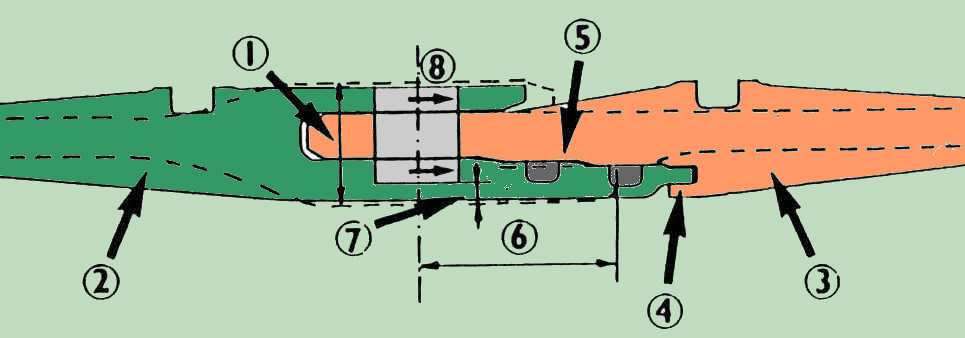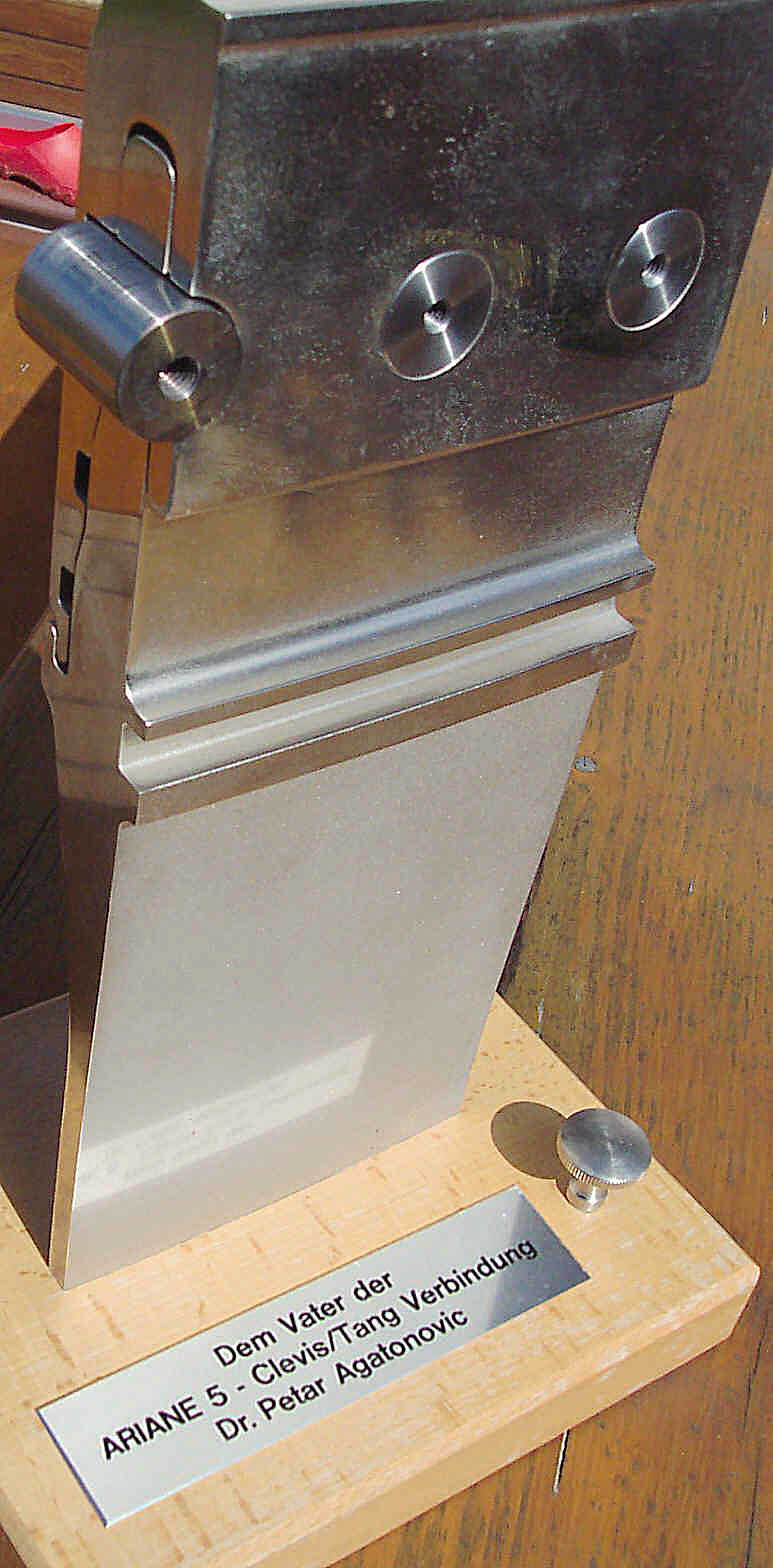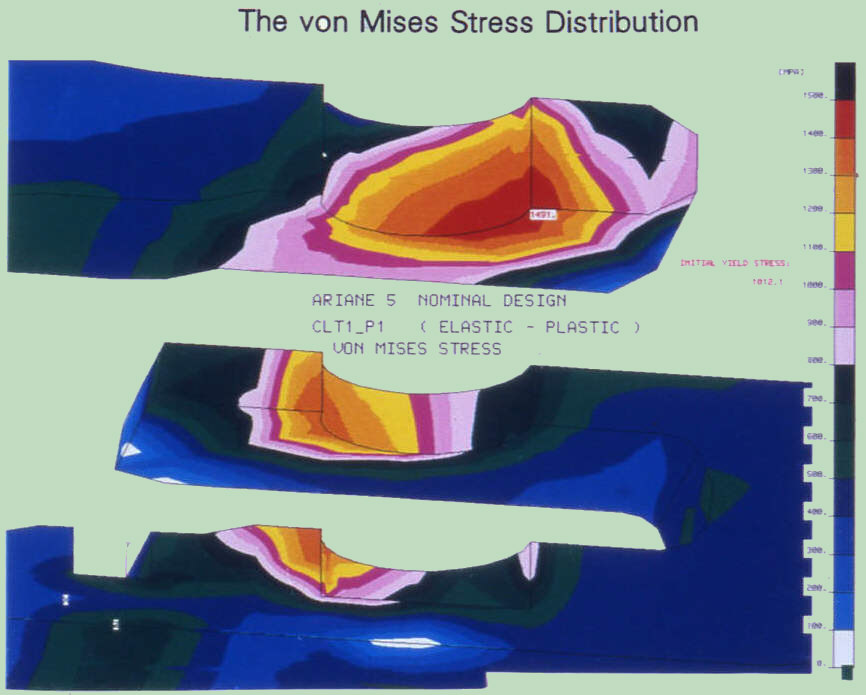Clevis-Tang
Connection

The great length of the rocket (30 m) makes the construction from segments necessary. The building of the rocket in this length is possible and expedient only at the place of the launch. The segments are connected with so-called clevis-tang connection.
Clevis-Tang connection on the interface between two cylindrical segments should ensure that under the specified load conditions at startup, the complete sealing of the housings to the outside at this interface and the safe and even load transfer are achieved.
Studies of various previous designs at the beginning of the ARIANE 5 development have identified a number of weaknesses that can be eliminated by appropriate solutions, such as:
-
Control of the gaps between the components to reduce the rotation in the joint caused by the pressure load and component geometries.
-
the use of some kind of the capture
device to prevent unstable conditions and excessive rotation, and
-
positioning other attachments on the
case away from the joint not too close to prevent possible interaction
of the effects.
Furthermore,
different possibilities to improve the connection, which were
considered in our design, were established:


-

Reducing
the difference in thickness between the connection and cylinder wall
will also reduce the difference in radial elongation and corresponding
joint rotation. This results in higher bearing loads for pin connection
and should be compensated by a larger pin diameter or an increased
number of pins.


If the transition in thickness is
moved far away from the connection (through prolonged cones on both
sides) the effect of wall relative expansion (ca 8 mm), causing
rotation and higher loads at the capture device, can be controlled. The
transition at the tang side is more important in this respect.

A capture device can control the gap
opening, to ensure the functioning of seals. It can prevent any eccentric movement in the connection and
helps in other less predictable situations as for example in the case
of thermal and mechanical distortions.

Increasing the length and reducing
the height of the sealing branch causes higher bending effects induced
by pressure loads, acting in the opposite direction to the joint
rotation.

The Assembly of seals (rubber O-rings) make easier and safer separation of the sealing surfaces on the lip. If, for example, the surface scratch damage seal, in the case of same sealing surface is the probability that both rings are damaged very high.
-
Equal pin load
distribution and reduced pin position eccentricity will prevent gap opening due to the branch bending.
Refined non-linear FEM analysis, taking into account elasto-plastic deformations in the material and conditions on the surfaces in contact, shows that the largest stress values in the connection occur in contact with the pin. The pin loads maximally the tang at the bottom of the tang bore and at the top of the holes in the clevis, resulting in a rotation of that joint and the highest stresses. The purposeful reduction of rotation in the connection, thus not only improves the sealing function, but also effectively reduces the highest levels of stress in this critical connection.
This high plastic deformation in the connection cause that reuse of the booster cylinder would not be a useful solution.


If interested for further details: Proc. Internat. Conf.:
"Spacecraft Structures and Mechnaical Testing", Noordwijk, The
Netherlands, 24 -26 April 1991 (ESA SP-321, Oktober 1991) - P.
Agatonovic and D. Sigula: Advanced Numerical Analysis for the
Optmisation of the Structural Bahaviour of the Intersegment Connection
for the ARIANE 5 Booster Case
Back to the begining
Return to main page




